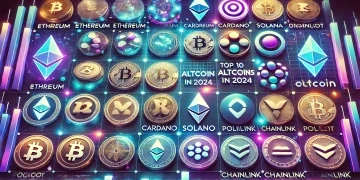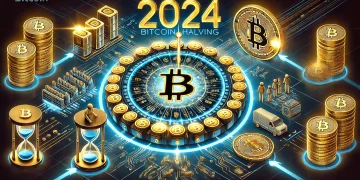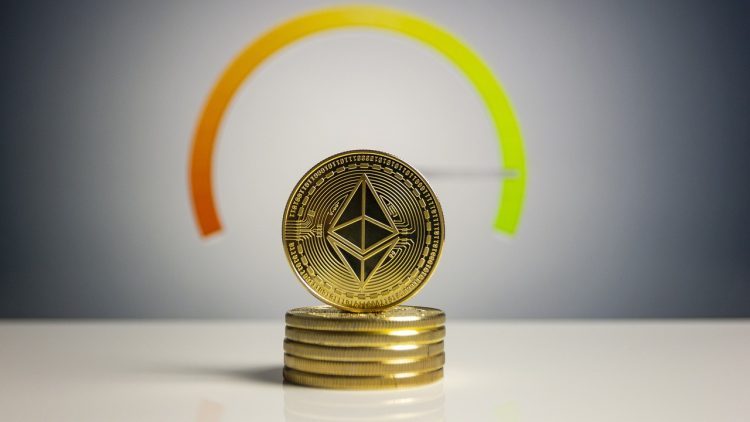Understanding Ethereum gas fees has become crucial for anyone involved in the Ethereum ecosystem. As the network continues to evolve in 2024, with various scaling solutions and improvements in place, knowing how to navigate and optimize your gas fees can save you significant amounts of money. This comprehensive guide will explore everything you need to know about Ethereum gas fees and provide practical strategies to minimize your transaction costs.
Understanding Ethereum Gas: The Basics
Gas in the Ethereum network functions similarly to fuel for a car – it’s the computational power needed to process transactions and execute smart contracts. Every operation on the Ethereum network, from simple transfers to complex smart contract interactions, requires a certain amount of gas to execute. The total fee you pay is calculated by multiplying the gas used by the current gas price.
The concept of gas was introduced to separately price the computational cost of transactions from the value of ETH itself. This separation ensures that as the price of ETH fluctuates, the network can maintain consistent pricing for computational resources. Understanding this fundamental concept is crucial for anyone looking to optimize their transaction costs on the Ethereum network.
How Gas Fees Are Calculated
The calculation of Ethereum gas fees involves several components that work together to determine the final cost of your transaction. Since the implementation of EIP-1559, the fee structure has become more predictable but still requires understanding to optimize effectively.
Base Fee and Priority Fee
The base fee is algorithmically determined by the network based on demand for block space. This fee is burned (destroyed) upon transaction completion, removing it permanently from circulation. The priority fee, also known as the tip, goes to miners or validators as an incentive to process your transaction quickly.
Gas Limits and Usage
Every transaction requires setting a gas limit – the maximum amount of computational power you’re willing to pay for. Setting this limit correctly is crucial; too low and your transaction might fail (while still costing gas), too high and you’re unnecessarily locking up funds that could be used elsewhere.
Factors Affecting Gas Prices
Understanding what influences gas prices helps you make informed decisions about when and how to conduct transactions on the Ethereum network. Several key factors contribute to the fluctuation of gas prices throughout any given day or week.
Network Congestion
Network activity significantly impacts gas prices. During periods of high congestion, such as popular NFT mints or DeFi protocol launches, gas prices can spike dramatically. Understanding these patterns helps you plan your transactions for lower-cost periods.
Time of Day
Gas prices often follow predictable patterns based on global user activity. Prices tend to be lower during off-peak hours, particularly when Asian and American markets have minimal overlap in their active trading hours.
Strategies to Minimize Gas Fees
Implementing effective strategies to reduce gas fees can significantly impact your overall costs when using the Ethereum network. These approaches range from simple timing adjustments to more advanced technical solutions.
Layer 2 Solutions
Layer 2 scaling solutions have become increasingly important in 2024 for reducing gas fees. Networks like Optimism, Arbitrum, and zkSync offer significantly lower transaction costs while maintaining the security guarantees of the Ethereum mainnet. Understanding how to effectively use these solutions can result in substantial savings.
Gas Price Monitoring
Utilizing gas price monitoring tools helps you identify optimal times for transactions. Tools like Etherscan’s gas tracker or specialized gas monitoring applications provide real-time data and historical patterns to inform your timing decisions.
Advanced Gas Optimization Techniques
For users looking to maximize their efficiency on the Ethereum network, several advanced techniques can help reduce gas costs even further.
Smart Contract Optimization
If you’re developing or interacting with smart contracts, understanding gas-efficient programming practices is crucial. This includes using appropriate data types, optimizing storage usage, and implementing efficient logic flows to minimize computational costs.
Batching Transactions
Combining multiple operations into a single transaction can significantly reduce overall gas costs. This technique is particularly useful for DeFi operations or when interacting with multiple smart contracts.
Tools and Resources for Gas Management
The Ethereum ecosystem offers various tools to help users manage and optimize their gas usage effectively. Understanding and utilizing these resources can lead to better transaction planning and cost savings.
Gas Trackers and Calculators
Modern gas tracking tools provide detailed analytics and predictions to help you make informed decisions about transaction timing and gas prices. These tools often include features like gas price alerts and historical data analysis.
DeFi Aggregators
DeFi aggregators have evolved to include gas optimization features, helping users find the most cost-effective routes for trades and other operations across multiple protocols.
Future of Ethereum Gas Fees
As Ethereum continues to evolve, several developments are expected to impact gas fees and how users interact with the network. Understanding these upcoming changes helps prepare for future optimization opportunities.
Ethereum Upgrades
Ongoing network upgrades and improvements continue to focus on scaling solutions and gas efficiency. Staying informed about these developments helps you adapt your strategies to take advantage of new optimizations.
Emerging Solutions
New layer 2 solutions and scaling technologies continue to emerge, offering additional options for gas optimization. Understanding these options as they become available ensures you can take advantage of the most cost-effective solutions for your needs.
Best Practices for Different Transaction Types
Different types of transactions require different approaches to gas optimization. Understanding these differences helps you apply the most effective strategies for each situation.
NFT Minting and Trading
NFT transactions often occur during high-congestion periods. Planning these transactions carefully and using specialized NFT platforms that implement gas optimizations can help reduce costs.
DeFi Operations
DeFi transactions can be complex and gas-intensive. Using aggregators, timing your transactions, and understanding the gas implications of different protocols helps optimize these operations.
Frequently Asked Questions
Q: What time of day are Ethereum gas fees lowest? A: Gas fees typically reach their lowest points during early morning hours UTC (around 2-8 AM), when global crypto trading activity is at its minimum. However, this can vary based on network events and market conditions.
Q: How much can Layer 2 solutions save on gas fees? A: Layer 2 solutions can reduce gas fees by 90-99% compared to mainnet transactions, though exact savings depend on the specific solution and current network conditions.
Q: Do failed transactions still cost gas? A: Yes, failed transactions still consume gas and incur fees because the network must process the computation attempt, even if it ultimately fails. This emphasizes the importance of proper gas limit settings.
Q: How can I estimate gas fees before making a transaction? A: Most modern wallets provide gas fee estimates before transaction confirmation. Additionally, tools like Etherscan’s gas tracker offer real-time estimates and historical data for planning purposes.
Q: Are gas fees the same for all types of transactions? A: No, gas fees vary based on the complexity of the operation. Simple transfers require less gas than complex smart contract interactions or NFT minting operations.
Conclusion
Managing Ethereum gas fees effectively requires understanding multiple factors and implementing various optimization strategies. As the network continues to evolve in 2024, staying informed about new developments and best practices becomes increasingly important for cost-effective operation on the Ethereum network.
Remember that gas optimization is an ongoing process that requires attention to network conditions, transaction timing, and available tools and solutions. By implementing the strategies outlined in this guide and staying informed about new developments, you can significantly reduce your transaction costs while maintaining effective operation on the Ethereum network.



















